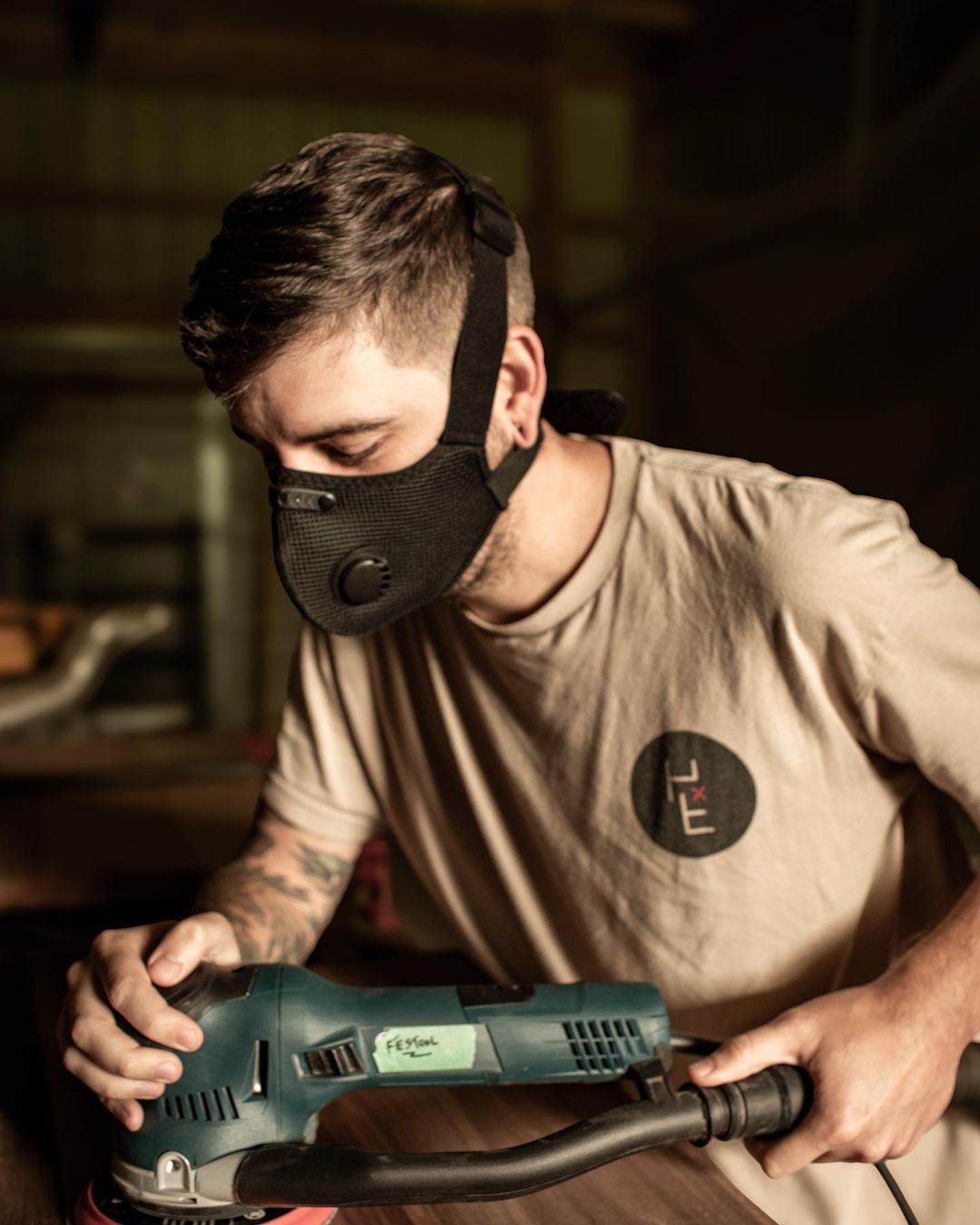The Importance of Wood Dust Masks in Woodworking: A Comprehensive Guide

I. Introduction
Woodworking is a rewarding craft that involves creating beautiful pieces from raw wood, but it also poses significant health risks due to exposure to wood dust. This fine dust can cause respiratory issues, allergies, and even long-term damage like nasal cancer if inhaled regularly. The primary purpose of wearing dust masks in woodworking is to reduce the inhalation of particulate matter, thereby minimizing respiratory impact. In this article, we will delve into the world of woodworking masks, exploring their impact on airflow dynamics, filtration efficiency, and deposition patterns of particulate matter.
II. Impact of Masks on Airflow Dynamics
A. Airflow Characteristics Without a Mask
In the absence of a mask, air flows uniformly through the nasal cavity and progresses smoothly through the respiratory tract. This uniform airflow ensures that particles are less likely to be trapped in specific areas, reducing the risk of localized irritation.
B. Changes in Airflow Dynamics with Mask Usage
When wearing a mask, the airflow dynamics change significantly. The mask introduces resistance, altering the speed and pattern of airflow. This can create complex flow patterns, including vortex and backflow zones at the nasal entrance. These changes can affect how particulate matter deposits in different areas of the respiratory system. For instance, a well-fitting mask can direct airflow in a way that reduces the likelihood of particles entering the deeper lung regions.
III. Factors Influencing Mask Filtration Efficiency
A. Material Properties
The efficiency of a mask in filtering particulate matter depends largely on its material properties, such as fiber density and electrostatic adsorption capabilities. Masks with higher fiber density and electrostatic properties are more effective at capturing smaller particles.
B. Comparison of Mask Types
- N95 masks are renowned for their high filtration efficiency, capturing at least 95% of airborne particles. They are ideal for environments with high levels of wood dust.
- Surgical masks offer lower filtration capacity compared to N95 masks but are still effective against larger particles.
- P100 respirators provide even higher protection, filtering out 99.97% of particles, making them suitable for environments with fine dust and fumes.
C. Effects of Mask Resistance on User Comfort
Masks with high resistance can make breathing more challenging, especially during high-flow conditions. This is why it’s crucial to balance filtration efficiency with comfort. Masks like the BASE CAMP M Plus offer a good balance by using activated carbon filters and ensuring airflow is not overly restricted1.
D. Influence of Breathing Patterns on Filtration Efficiency
Different breathing patterns, such as constant and cyclic breathing, can influence filtration efficiency. Cyclic breathing may enhance the interaction between particles and the filter material, potentially increasing the capture rate of particulate matter.
IV. Deposition Patterns of Particulate Matter in the Respiratory Tract
A. Factors Affecting Deposition Location
The location where particulate matter deposits in the respiratory tract is influenced by particle size, airflow velocity, and the type of mask worn. Smaller particles, like PM2.5, can penetrate deeper into the lungs, while larger particles tend to deposit in the nasal cavity or throat.
B. Behavior of Different Particle Sizes
- Smaller particles (e.g., PM2.5) are more likely to reach the deeper lung regions due to their ability to follow airflow more closely.
- Larger particles are typically trapped in the upper respiratory tract, reducing the risk of deep lung penetration.
C. Effectiveness of Masks in Reducing Particulate Matter Exposure
Masks can significantly reduce the amount of particulate matter that enters the respiratory system. By wearing a mask, more particles are retained in the nasal region, reducing the risk of deep lung exposure.
V. Choosing the Right Woodworking Mask
When selecting a woodworking mask, several factors should be considered:
- Filtration Efficiency: Look for masks with high filtration efficiency, such as N95 or P100 respirators.
- Comfort and Fit: Ensure the mask fits snugly with adjustable straps and a moldable nose clip to prevent leaks.
- Type of Mask: Decide between half masks, full face masks, or disposable masks based on the level of protection needed and personal comfort.
- Additional Features: Consider masks with carbon filters for odor control and valves for easier exhalation.
VI. DIY Woodworking Projects and Mask Usage
For DIY woodworking projects, it’s essential to choose a mask that balances protection with comfort. Reusable half masks with replaceable filters are cost-effective and provide good protection against wood dust and fumes6. Always ensure a proper fit by adjusting the straps and molding the nose clip to prevent gaps.
VII. Conclusion
In conclusion, Best respirator for woodworking play a crucial role in protecting woodworkers from the risks associated with wood dust and other airborne particulates. By understanding the impact of masks on airflow dynamics and filtration efficiency, woodworkers can make informed decisions about which masks to use. Balancing protection with comfort is key to ensuring long-term respiratory health. High-quality masks like those from BASE CAMP offer advanced features such as activated carbon filters and adjustable nose clips, making them ideal for both professionals and hobbyists18.
Additional Tips for Woodworkers
- Regular Maintenance: Regularly inspect and replace worn-out filters to maintain optimal protection.
- Proper Use: Always wear safety goggles or prescription glasses with a mask to protect your eyes from flying debris.
- Continuous Use: Ensure the mask is comfortable for continuous use to avoid removing it during work, which could expose you to harmful particles.
- Safety Precautions: Use safety goggles alongside a mask for comprehensive protection during tasks like sanding.
By following these guidelines and choosing the right mask for your needs, you can enjoy woodworking while safeguarding your health.
